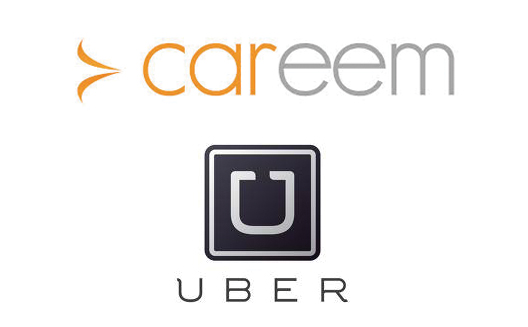As ride-hail giants Uber and Lyft continue to change the taxi-limo landscape, international competitors are emerging from the far corners of the globe.

Companies such as Careem, EasyTaxi, Tappsi and 99Taxis have emerged from the Middle East to Latin America.
Data company 7Park reports that Careem is growing fastest in Saudi Arabia and the United Arab Emirates while Uber is dominating Egypt.
EasyTaxi, on the other hand, is struggling to expand its boundaries.
Jambu Palaniappan, Uber’s general manager of Eastern Europe, Middle East and Africa, says his company has invested $250 million in the region and it’s paying off.
In the past year, Cairo has become the company’s fastest growing market in the Middle East and has seen 200 times growth in its total business. In Cairo alone, Uber is adding 3,000 new drivers a month. For comparison, in Brazil, Uber’s second-largest Latin America market, it plans on adding about 4,000 drivers a month over the next year.
The company said drivers were performing “hundreds of thousands” of trips per month in Saudi Arabia and the United Arab Emirates (UAE) respectively and it was adding “thousands” of drivers a month in Saudi Arabia alone.
Careem, which is in 26 cities across the region and Pakistan, saw 330-times growth in active users in Egypt between December 2015 and January 2015. In that same time period, the company saw nearly 20 times more active users in Saudi Arabia and nearly four times more growth in active users in the UAE.
The growth numbers in Egypt alone paints an interesting picture. With a population of more than 89 million, Egypt is a huge and therefore incredibly important market for global ride-hail players. The population in Saudi Arabia and the UAE combined pales in comparison.
In Latin America, EasyTaxi has reportedly raised a total of $77 million in funding and is in 18 countries globally, and Tappsi, which only operates in Colombia but has 450,000 registered users, have already formed a significant partnership.
Uber, is now in nine Latin American countries, including Peru, Colombia, Mexico, Costa Rica and Brazil. In addition to navigating local nuances such as legislation that limits commercial operation of private cars and a low smartphone penetration in some cities, Uber is facing competition from regional players EasyTaxi and local companies like Tappsi and 99Taxis in Brazil.
EasyTaxi and Tappsi have begun pooling resources, and together are in 11 countries; 99Taxis has dominated 70 percent of the taxi-hailing market share in Brazil. Uber, however, has quickly dominated Mexico — its third-largest market after the U.S. and China — where peer-to-peer transportation service was recently legalized.
“We have a talented team here in Brazil and Tappsi has a talented team in Bogota,” said Dennis Wang, Easy Taxi co-founder and co-CEO. “It has so far helped us speed up the improvement of our technology — for example, how we search for the closest driver — and how Tappsi does it is different. So the users should see better performance as a result of this merger.”
Easy Taxi started in Latin America in 2011, just two years after Uber had its start in San Francisco, and immediately began building a platform for emerging markets.
“In all the markets except for Mexico, we are five times bigger than Uber in Latin America,” Wang said. “We understand Latin America well, and we understand we have to localize to ensure quality. Those needs vary from market to market.”
Founded in 2012, Brazil’s 99Taxis faces an uphill struggle due to the country’s GDP growth collapsing into the negatives and the presence of stringent commercial transportation regulations. Capturing the market in Brazil presents a challenge.
The company says it does an average of four million rides a month. Though 99Taxis has fared relatively well in Brazil, the company doesn’t have immediate plans to expand into other parts of the region.
“Brazil is a must-win market in the world,” said Peter Fernandez, 99Taxis’ chief product officer. “It has the world’s fifth-largest population. From my perspective, it’s a much more important priority for the company to win in Brazil than it is to peanut-butter our operations across the region.”
The company currently has 10 percent of the Brazilian market.
